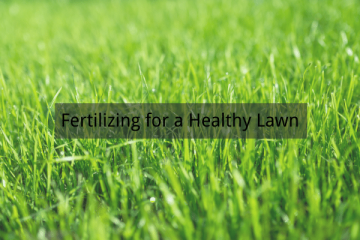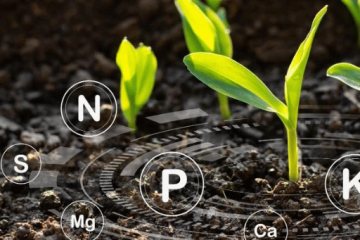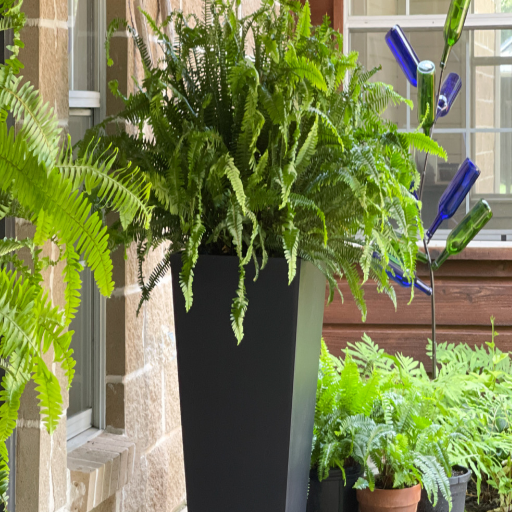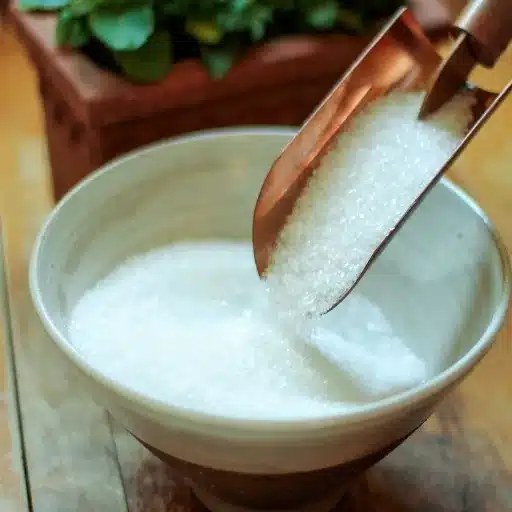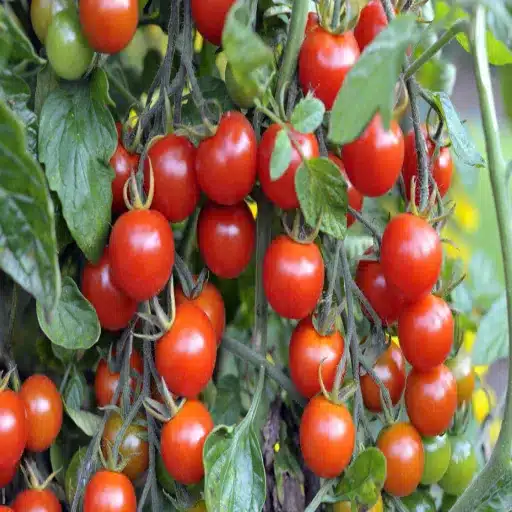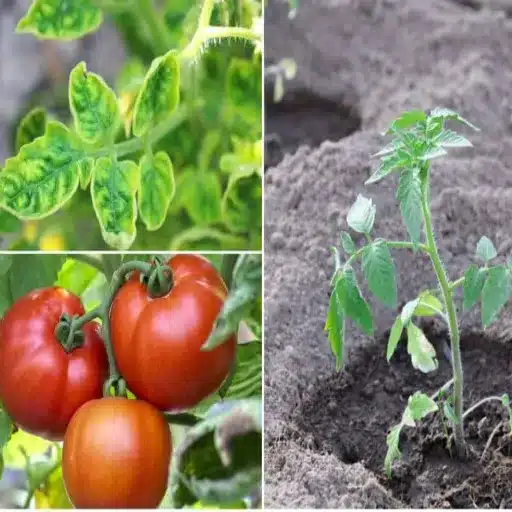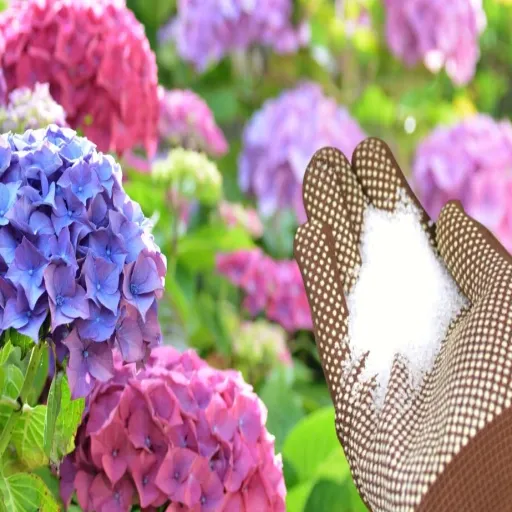Epsom salt, a naturally occurring mineral compound of magnesium and sulfate, has been a trusted tool in gardening for decades. Its potential to enhance plant health and growth stems from its ability to address common nutrient deficiencies, improve soil quality, and even deter certain pests. This article will explore the science behind Epsom salt’s effectiveness in plant care, its proper applications, and the measurable benefits it delivers to both home gardens and large-scale agricultural systems. By understanding the detailed mechanisms and best practices for incorporating Epsom salt into your gardening routine, you can ensure healthier plants, higher yields, and more efficient nutrient management.
How Does Epsom Salt Benefit Plants?
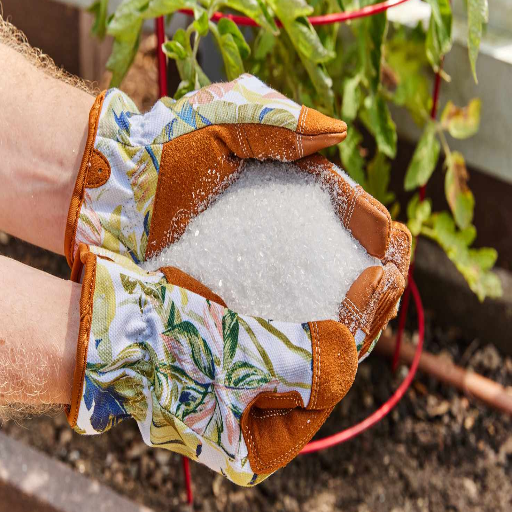
Understanding Magnesium and Sulfur in Gardening
Magnesium (Mg) and sulfur (S) are primary macronutrients that are critical for a plant’s metabolism and well-being. The magnesium ion serves as the core of the chlorophyll during photosynthesis; hence, it is critically essential for photosynthesis. Additionally, it facilitates enzymatic activation, carbohydrate metabolism, and cell energy transfer. Plants generally need magnesium in amounts from 0.15% to 0.50% of their dry weight. Definitions are usually expressed as interveinal chlorosis where the leaf veins are green and leaf tissue is yellowish.
Sulfur is largely used in the metabolic processes of forming amino acids, proteins, and vitamins. Additionally, it also aids in the development of some enzymes as well as secondary metabolites which protect plants from harmful environmental factors. It is known that sulfur is taken in smaller amounts compared to magnesium, however, it still has to be in sufficient supply. Plants in general take sulfur in the form of sulfate (SO₄²⁻) ions and the deficiency symptoms involve the light green or yellow leaves of the entire plant.
Epsom salt is often used as a supplement by untrained gardeners. Formally, Epsom salt is magnesium sulfate (MgSO₄·7H₂O), which readily dissolves in water and, therefore, is very accessible to plants. As such, it provides magnesium and sulfates mineralized in a way where they will be readily absorbed by plants. Epsom salt can also be over-applied, so it is recommended to add no more than 1 tablespoon per gallon of spray or 1-2 cups per 100 square feet of soil. Before adding Epsom salt, it is prudent to perform a soil test to ascertain existing nutrient levels, thereby optimizing the salt’s benefits. The correct use of Epsom salt guarantees optimum health for the plants.
Exploring the Nutrient Boost from Epsom Salt
Epsom Salt enhances nutrient levels for plants through the provision of Magnesium (Mg) and Sulfur (S). Optional contributions are the incorporation of sulfur to assist in amino acid formation and protein synthesis. Magnesium is crucial for the photosynthesis process of any green plant since it is the nucleus of chlorophyll. To ensure its application is justified, I conduct a holistic soil test to evaluate baseline sulfur and magnesium concentration.
- Foliar Spray: 1 tablespoon of Epsom salt in a gallon of water. Epsom salt is best utilized by applying it to the leaves for faster absorption of nutrients.
- Soil Application: 1-2 cups per 100 sq feet; applied uniformly over the area without excessive concentration in one place.
It is important to note that these rates are calculated based on standard agronomic recommendations With the formulated calculations, I am confident that individual plant requirements can be met without exceeding the threshold values.
Can Epsom Salt Improve Plant Growth?
Indeed, under certain conditions, Epsom salt can enhance the plant’s growth. My investigation revealed that its two major parts, magnesium, and sulfur, are vital for the construction of chlorophyll andthe metabolism of the proteins respectively. Therefore, Epsom salt is very useful for plants that lack these elements. More technically, the effectiveness is variable based on the there are enough amount of nutrients in the soil and what the specific plants require.
- Not Sufficing Magnesium for Chlorophyll Formation: Magnesium is paramount for the production of chlorophyll; thus, leads to effective photosynthesis. If the soil has a lower magnesium level (<50 ppm based on normal soil tests), then supplementation with Epsom salt is fundamental.
- Deficit of Sulfur Potentiates Protein Formation: To make an array of amino acids, it is necessary to overcome the deficiency of sulfur which is common in sandy soils and soils that are intensely leached. 10 ppm is the threshold, which needs to be supplemented.
In my view, it is best to apply foliar sprays at the rate of 1 tablespoon per gallon, particularly in magnesium-hungry plants such as tomatoes and peppers. But for general application, it is beneficial to use 1&2 cups for every 100 square feet. Careful measurements must always be made otherwise excess applications will cause other side effects with Epsom salt, where accurate calculations always make the targeted results achievable.
How to Use Epsom Salt Effectively in Your Garden
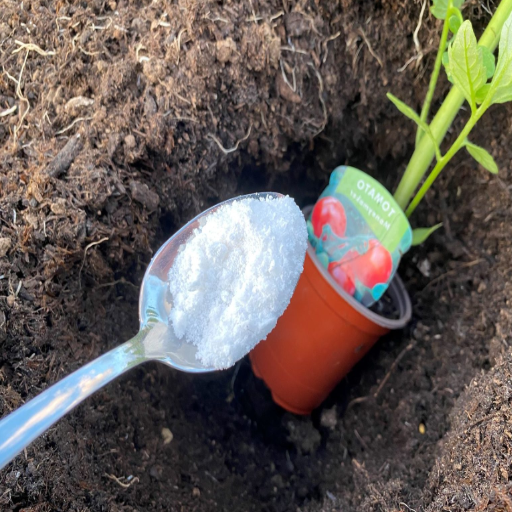
Determining the Right Amount of Epsom Salt to Add
The quantity of Epsom salt that is appropriate to use in your garden depends on the plant variety, soil type, and any deficiencies noticed. As a rule of thumb, when applying to soil, 1–2 cups of Epsom salt can be used to rectify magnesium deficiency by mixing it into every 100 square feet of garden bed. For certain crops like tomatoes, peppers, and roses, Epsom salt should be applied as follows:
- Tomatoes and Peppers: To improve growth and fruit set, use 1 tablespoon of Epsom salt dissolved in 1 gallon of water as a foliar spray every two weeks.
- Roses: To increase magnesium in roses, use 1/2 cup of Epsom salt around the base of each rose bush during the growing season.
Distributing foliar sprays correctly is crucial; testing soil magnesium content first is important. The ideal range is 20–30 ppm, as higher concentrations can disrupt calcium and potassium levels, which limits plant uptake. Ensure the mix is completely dissolved for optimum absorption. Soil pH also requires temperature checks since Epsom salt works better for soils that are slightly acidic to neutral (pH 6.0–7.0).
Using Epsom Salt Per Gallon of Water
- For Economical Home-Based Spa: To prepare an effective Epsom salt solution of about one gallon of water, dissolve 1 tablespoon (approx 15 g) of Epsom salt into one gallon (3.78 liters) of water. This ratio enables adequate magnesium supply while not overwhelming the screen or foliage.
- Magnesium Sulfate Solubility: Epsom salt is very easy to dissolve in water at room temperature (68F or 20 C) which tremendously increases the chances of absorption when used as a spray or soil drench.
- Application Frequency: It’s most effective to apply the solution once every two to four weeks during the active growing period. Overuse of the solution can compromise some of the nutrients.
- pH Considerations: Soil pH should be controlled between 6.0 and 7.0 to allow maximum magnesium uptake since the more acidic or alkaline conditions there are, the lower this nutrient becomes.
- Environmental Factors: Provide the solution early in the morning or late in the afternoon to avoid evaporation of the solution, as well as, burning of the leaves from the direct sun.
Modify quantities or intervals based on the size, condition, and level of deficiencies of the plants to ensure the plants are managed sustainably and nutrients are optimally used.
Is Epsom Salt Good for Tomato Plants and Other Vegetables?
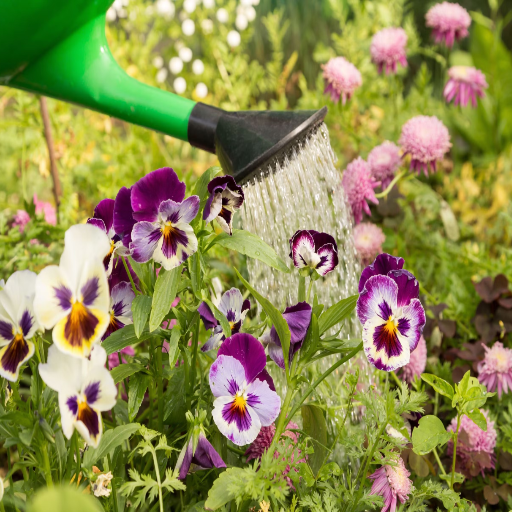
Preventing Blossom End Rot in Tomato Plants
The blossom end rot of a tomato plant is usually the result of a lack of calcium which could stem from poor watering patterns and bad soil practices. To help correct the problem, I suggest the following technical interventions:
- Manage Soil Water Content: Water the plant such that the soil is neither too dry nor too flooded. If watering is inconsistent, calcium intake can be negatively affected, therefore it is critical to monitor and amend watering schedules.
- Check Soil’s Ph Levels: Soil is best for growing tomatoes around pH levels of 6.2 to 6.8. Purchase a soil testing kit to check the pH value and claim amendments such as lime to increase, or sulfur to decrease pH levels.
- Calcium Fertilizers: If there is a lack of calcium, then using calcium nitrate as fertilizer in recommended amounts will suffice. Calcium can also be injected through the leaves by way of foliar sprays.
- Limit Nitrogen Intake: Since nitrogen is good for the leaves, too much of it can negatively counteract calcium intake. Instead of using high nitrogen fertilizer, balanced fertilizer can be utilized to solve this issue.
- Remediate Soil Drainage and Structure: Compact soil or soil that has poor drainage disrupts root growth and nutrient absorption. Adding organic materials such as compost can enhance soil structure and improve drainage.
By implementing these steps, one can mitigate the risks associated with blossom end rot, leading to improved health and productivity of tomato plants. Balanced management of water, nutrients, and soil conditions is crucial in mitigating this widespread problem.
Enhancing Seed Germination with Epsom Salt
The application of Epsom salt (magnesium sulfate) can significantly improve seed germination by providing important nutrients, specifically magnesium and sulfur, that are needed for biochemical reactions and the initial growth of the plants. For best results, I suggest the following approach for the application of Epsom salts in seed germination:
- Seed-Soaking Solution: Before planting, soak seeds in a gallon of water combined with 1-2 tablespoons of Epsom salts for twelve to twenty-four hours. This step aids in germination by softening the seed coat and nutrient access post-sowing.
- Initial Watering: Upon sowing seedlings, water them with a combination of one tablespoon of Epsom salt, and a gallon of water. This guarantees an ample supply of magnesium during the most critical early development stages.
- Top-Dressing Application: For continual magnesium supplementation, Epsom salt can be applied dry, as a top dressing over seedlings. Apply at the rate of one teaspoon per square foot and not too often to avoid salt accumulation in the soil.
These practices seem to be reasonable and follow existing topdressing methods known in horticulture, supporting magnesium’s role in photosynthesis and sulfur’s contribution to forming plant proteins. Alter application rates based on species and soil tests conducted to prevent deficiencies while ensuring there adequate nutrition for seedlings.
Epsom Salt and Pepper Plants: A Perfect Match?
Epsom salt is one of the plant supplements that can be beneficial to pepper plants within magnesium and sulfate Epsom salt Aids in chlorophyll production together with protein synthesis which aids in enhancing plant health and increasing yield. Salt, considering its sulfur and magnesium constituent, enhances protein production alongside sthe ynthesis of chlorophyll, which is essential for plant growth.
- Soil Preparation in Advance Dessicating: Magnesium boost salt solution can be used as a drench before planting at a ratio of 2 tablespoons of salt per gallon of water. Ensure to mix the salt into the planting area alongside transplanting seedlings.
- Top Spraying during Growth: Use Epsom salt at the ratio of 1 tablespoon per gallon of water and spray on the foliage every second week This guarantees rapid absorption of magnesium and further aid during flowering and fruit setting.
- Supplement Spraying Tri-Weekly: In case supplementation has to be administered for 1 teaspoon, this can be used as dry magnesium top dressing at the base of the foliage, while maintaining a foot distance to avoid damaging the stomata.
These recommendations are justified based on magnesium’s role in enhancing photosynthesis and sulfur’s contribution to optimal root and fruit development. Always examine soil test results beforehand to ensure nutrient levels are balanced and avoid excessive salt application.
Can Houseplants Benefit from Epsom Salt?
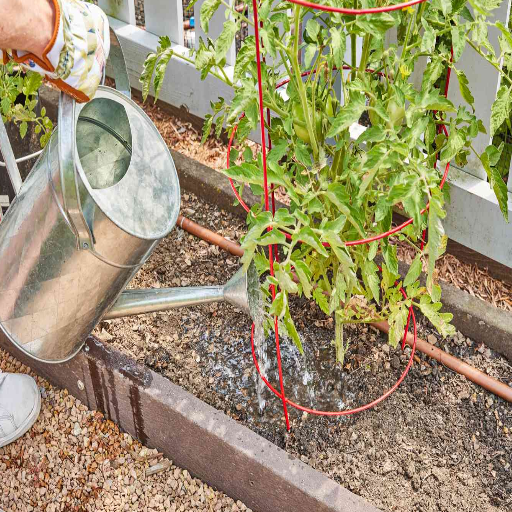
Methods to Use Epsom Salt for Houseplants
To maximize the benefits of Epsom salt usage in houseplants, great care needs to be taken regarding the application process.
- Dosage for Sticker Solution: Mix one teaspoon of Epsom salt in one gallon of water. Use a spray can to apply directly on the leaves every two to four weeks. Epsom salt increases the rate of chlorophyll formation through stomata.
- Watering: Mix Epsom salt at the rate of one teaspoon per gallon of water every four to six weeks as part of the regular watering schedule. This gradual application enables magnesium and sulfur to slowly release to the roots which enhances nutrient absorption.
- Granular: Once every three months, apply a tablespoon of Epsom salt directly onto the soil at the base of the plant ensuring the measurement of one teaspoon per square foot of soil per evenly distributed over the surface of the. This helps the plant’s fine roots with nutrient acquisition without over-salting the soil.
- Nutrient Application: Epsom salt can be mixed into the soil before seed planting at the rate of one tablespoon per square foot to enhance germination and seedling growth.
If you stick to these steps and stay within the set limits, houseplants are likely to benefit from the improved supply of nutrients necessary for healthy growth.
Identifying Magnesium Deficiency in Indoor Plants
An indoor plant with magnesium deficiency shows certain noticeable visual and physiological symptoms in the leaves. These flag symptoms include interveinal chlorosis wherein the plant leaves turn yellowish between their veins while the veins remain green. Additionally, older leaves are affected first because magnesium is mobile metabolically and relocates from older tissues where it is stored to the new growth area. Other signs include retarded growth and slow responsiveness to diseases.
- Soil Chemistry Check: Magnesium becomes increasingly less available to plants if the pH level is lower than 6.0 or higher than 8.0. A soil test for pH is necessary to check the acidity range because magnesium is notoriously difficult to obtain in acids.
- Directions of Water Application: Plant containers that poorly drain and have incessant watering practices lead to magnesium deficiency as the mineral is often washed away. Ensure there is an adequate balance for the watering schedule.
- Composition of the Fertilizer: Check the content of the utilized fertilizers. Solutions rich in potassium, calcium, or ammonium tend to pollute the soil too much and will interfere with the uptake of magnesium.
- Testing plant leaves: Test the leaves via some tissue analysis of houseplants to directly check the concentration of magnesium. The desirable range for houseplants in optimal form is between 0.5% and 0.2% in terms of dry weight.
By methodically evaluating these aspects, you can accurately diagnose magnesium deficiency and take corrective action to restore plant health.
Are There Any Drawbacks to Using Epsom Salt in the Garden?
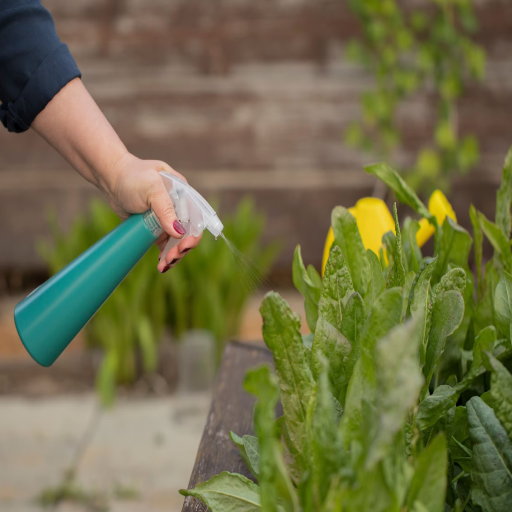
When Plants Don’t Like Epsom Salt
In my view, not every plant or scenario can Epsom salt be helpful. Although magnesium sulfate, the primary ingredient of Epsom salt, is useful for magnesium-starved plants, its overapplication can lead to serious damage. To further illustrate, plants growing in low-magnesium regions can suffer from nutrient imbalances if excessive magnesium is added. Epsom salt does not need to be applied without determining whether a magnesium deficiency exists through testing soil or leaf tissues since it can inhibit the uptake of other important nutrients like calcium and potassium.
- Soil With High pH: It is advisable to steer clear of applying Epsom salt in alkaline soils since magnesium is hard to come by, especially in regions with a pH greater than 7.0.
- The Epsom salt ratios: While foliar spraying, Epsom salt should be diluted to a 1-2% concentration which is why one tablespoon should be added to a gallon of water to prevent wilting of leaves.
- Purposeful Conditions: Magnesium leaves should be dry before being tested to confirm the salt can be used.
Salt accumulation in plant systems can lead to detrimental effects so applying it more than once every month should be avoided. Based on direct, tangible evidence Epsom salt can dramatically aid in improving plant health.
Conducting a Soil Test Before Application
To me, it is clear that a soil test will dictate whether and how Epsom salt can be applied. The magnesium level and pH of the soil have to be checked before application to make sure there are magnesium deficiencies calculated and soil conditions are suitable for supplementation.
- Soil pH Level: I make sure that the pH of the soil in question is lower than 7.0 because alkaline soils are hostile to magnesium. The pH level can be measured using a digital pH meter or ordinary soil test kits.
- Magnesium Content Concentration (ppm): Magnesium concentration in soil can be analyzed by soil examination in parts per million (ppm). Average magnesium is expected to be 25-50 ppm as per the type of crop grown.
- Confirmation of the Recommendations: Balance of other nutrients, especially calcium and potassium is ensured, elimination of which would lead to exaggerated application of magnesium and impair its uptake.
Following the steps mentioned, I can make decisions that help to manage the issues related to over nine applications, namely the disruption in nutrient balance, and at the same time gain the most for plant health.
Reference sources
Frequently Asked Questions (FAQs)
Q: What are the benefits of using Epsom salt for plants?
A: Epsom salt, also known as magnesium sulfate, can help plants by providing magnesium and sulfur, which are essential nutrients. It can enhance nutrient uptake, improve photosynthesis, and help plants grow bushier. Many gardeners find that Epsom salt in gardening can improve the overall health of their plants.
Q: How does Epsom salt help tomato plants?
A: Epsom salt for tomato plants can be particularly beneficial. It helps in the uptake of phosphorus and nitrogen, which are critical for tomato growth. It can also prevent blossom-end rot by helping to balance calcium in the soil, ensuring your tomato plants thrive.
Q: How much Epsom salt should I add to my garden soil?
A: For garden plants, it is generally recommended to use one tablespoon of Epsom salt per foot of plant height. Mixing it into the garden soil can help improve nutrient availability and encourage healthier growth.
Q: Can Epsom salt be used for potted plants?
A: Yes, Epsom salt can be beneficial for potted plants as well. Adding two tablespoons of Epsom salt per gallon of water can help provide essential nutrients that may be lacking in container-growing environments, aiding in the plant’s overall health.
Q: Is there a risk of using too much Epsom salt for plants?
A: While Epsom salt can be beneficial, using too much can lead to nutrient imbalances and potentially harm your plants. It’s important to follow recommended guidelines and adjust based on your plant’s specific needs.
Q: Can Epsom salt help plants in containers?
A: Yes, using Epsom salt for plants in containers can address nutrient deficiencies. For best results, dissolve two tablespoons of Epsom salt in a gallon of water and use it to water your container plants every few weeks.
Q: How often should I use Epsom salt in my vegetable garden?
A: In a vegetable garden, applying Epsom salt once a month is usually sufficient. This can provide the necessary nutrients without overwhelming your plants, ensuring they remain healthy and productive.
Q: Can Epsom salt prevent any plant issues?
A: Epsom salt can prevent issues like magnesium deficiency, which may cause yellowing leaves in plants. By ensuring your plants have access to adequate magnesium, Epsom salt can help maintain vibrant, green foliage.
Q: How do I apply Epsom salt to garden plants?
A: To apply Epsom salt to garden plants, dissolve one cup of Epsom salt in five gallons of water. Use this solution to water your plants, ensuring a thorough soak around the base. This method allows nutrients to be efficiently used by plants.

